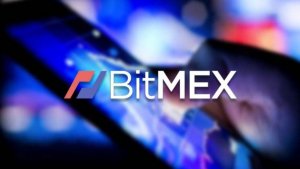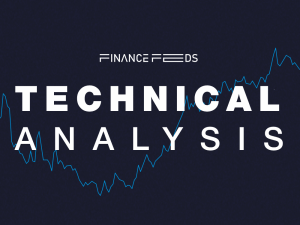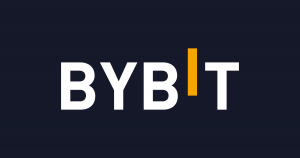End of the Euro as a monetary union? Interbank FX movements on the way
If a bank run occurs in Italy, the intra-EU wrangling could cause an interbank FX issue or an exodus from the Eurozone. We look at current analysis and at a good way to tackle this market

Major currencies have become such a staple in the everyday life all all traders from those at professional desks in Chicago trading their own account, to large interbank market makers across hedge funds and down to retail traders using MetaTrader 4.
The absolute given that the major reserve currencies will continue their unabated strength as liquid asset classes has not been challenged since the downing of the Berlin Wall and the continued post-war efforts that led to the entrance of many Western European nations into a monetary union.
Thus, for the last 20 years, which represents the majority of the lifespan of the retail FX industry’s mass market contenders, not much has changed in terms of the actual asset classes that are available, and all changes have been either market driven, technologically driven or regulation driven.
Now, however, there is a potential undercurrent that has sparked the interest of financial analysts that is going unnoticed elsewhere, that being the intra-European movement of capital which is becoming an issue for central banks and could well have an effect on the Euro as a currency.
Back in 2013, when New Zealander and London resident Jon Vollemaere, a veteran FX industry executive, launched R5FX which focuses on currency pairs from emerging market economies.
At that time, it may well have been perceived as an unusual direction, Mr Vollemaere took his expertise at the leading edge of the world’s Tier 1 financial marekts which included executing the first trades of Reuters D22 and the launch team of Currenex which was then acquired by State Street for $564 milion, to developing retail FX trading in Europe for FXCM and Barclays, and began to focus on five currencies from emerging markets, those being the Real, the Rand, the Rupee, the Rouble and the Renminbi.
Looking at this direction now appears a lot less banal and as we have seen China grow its economic forces outside its strictly controlled borders and invest in entire nations, develop the new Silk Road under the leadership of astute businessmen and Chinese president Xi Jinping, South Africa become a new and very high quality destination for FX brokerages and Russia become a nation of young technology geniuses who conduct R&D for large FX technology projects from co-working spaces in trendy Moscow streets.
Meanwhile the Euro, which is an unfaltering major, faces some serious challenges on home turf this week.
The Italian government is defying the European Commission’s request that it revise its draft budget for 2019 to reduce the deficit. Bond yield spreads are widening and Italian banks are under pressure. Should a bank run ensue, some British economists are looking at the possibility that this could be one catalyst that could end the monetary union.
After German reunification, interest rates rose to over 9 per cent in the early 1990s. Other countries that pegged their interest rates to the Deutsche mark through the exchange rate mechanism of the European Monetary System (EMS) could not keep pace.
Currency speculators forced devaluations and, finally, a far-reaching decoupling of the currencies participating in the system. This experience motivated many European politicians to press for the rapid introduction of a single European currency. No country should be forced to crash out of a monetary union by sheer market forces but of course the Euro spans across several nations that have no economic, cultural or commercial alignment with each other.
In Italy, banks have begun to feel the stress and some Italian bank customers have started to move deposits out of the country. Suppose many of these customers were to lose confidence in the security of their bank deposits and relocate them to Germany. Instead of granting their Italian partners interbank loans, German banks would probably require them to transfer valuable claims in the form of central bank money to cover the new liabilities.
As a counterpart, the BdI would have corresponding liabilities in the Target2 interbank payment system and the Bundesbank the associated claims. In purely theoretical terms, therefore, the euro could not be cracked by a “bank run”.
In practice, however, Italian banks will not be able to acquire the central bank money they need to finance the outflow of their deposits under these circumstances. The Governing Council of the ECB can, by a simple majority, end the full allotment of central bank money and by a majority of two-thirds of its members, end the issuance of central bank money by the Banco di Italia.
One of the only ways to stem this would be for Italy to introduce capital controls, but in a unified Europe in which the European Central Bank is the issuer of reserve currencies rather than the national reserve bank of each country, that would be impossible to implement and the only way to do so would be for the country wishing to implement such a measure to leave the Euro currency and adopt its own national currency.
Italy does not have a place in the world’s financial markets economy and is in serious fiscal ruin, with rampant corruption plaguing its national policy, and is surrounded by other Southern European countries which have been experiencing youth unemployment levels of 57%.
Instead of embracing electronic trading as a means of empowering the young people of Southern Europe and allowing them to have their own independent income stream, the government has railed against it and regulated and taxed it out of the market.
When confidence is low, the elite moves its capital and Italy’s elite would need to move it outside of Europe in order to be free from any potential capital controls or EU inititives to stop banks in other EU jurisdictions allowing bank runs in one country to flood the banks in another, as this would create an interbank FX dealing mess.
It is an area to keep an eye on, and for retail FX brokers with an EU license, could be one to capitalize on.









